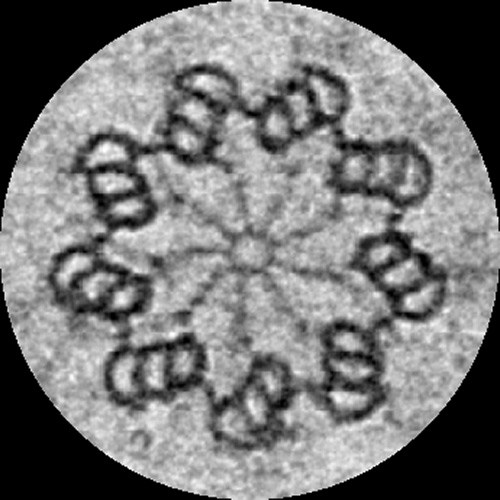![Centrioles, like the one depicted in this electron micrograph, are unexpectedly persistent in developing embryos. [Pierre Gönczy/EPFL]](https://genengnews.com/wp-content/uploads/2018/08/Apr24_2015_PierreGönczyEPFL_CentrioleElectronMicrograph8220612621-1.jpg)
Centrioles, like the one depicted in this electron micrograph, are unexpectedly persistent in developing embryos. [Pierre Gönczy/EPFL]
Centrioles, the barrel-shaped organelles best known for their role in cell division, may also put their stamp on early embryos. In a newly fertilized embryo, the centrioles that are present come exclusively from the male’s sperm, and they help “jump start” embryonic development. This much is well known. New research, however, indicates that parentally donated centriolar components are unexpectedly durable. They persist through many cell divisions, raising the possibility that defective centrioles donated by sperm can persist well into the life of the embryo, contributing to centriole diseases.
These diseases include developmental abnormalities, respiratory conditions, male sterility, and cancer. Besides potentially playing a role in such diseases, parentally contributed centrioles could have a more general significance. Centrioles could serve as nongenetic carriers of heritable information.
This intriguing possibility was mentioned by scientists at Ecole Polytechnique Fédérale De Lausanne (EPFL) when they presented their centriole-tracking work in Cell Research. According to these scientists, who were led by cancer researcher Pierre Gönczy, Ph.D., “Centrioles may act as information carriers across several cell cycles, for instance through posttranslational modifications.”
Such modifications would affect parentally donated centriolar components, which the EPFL scientists determined can persist up to 10 cell generations. “Conceivably,” the EPFL scientists continued, “this could also allow the paternal gamete to donate dedicated information to the zygote, in a manner that is conceptually analogous and reciprocal to the contribution of maternally provided mitochondria.”
In their Cell Research article—“Paternally contributed centrioles exhibit exceptional persistence in C. elegans embryos”—the EPFL scientists described how they used genetically modified versions of C. elegans to assess the persistence of centriolar components in the context of a developing organism. The original centrioles in C. elegans—like the original centrioles in humans and other organisms—are contributed only by sperm cells.
In their C. elegans model, the scientists tagged three different centriole proteins with a fluorescent signal. Tagged male worms were mated to untagged females, so that the scientists could specifically track centriolar components that were contributed from the father during the course of embryogenesis.
Dr. Gönczy's team imaged the fluorescent signals at different cell divisions of the developing embryos, and discovered that paternally contributed centriole proteins can actually persist up to 10 cell generations. The data show for the first time that centrioles are remarkably persistent in the developing embryo. If centrioles exhibiting long-term persistence were to accumulate damage, battered centriolar components could become increasingly dysfunctional and even contribute to disease.
Even more intriguing are the implications for biology at large. Centrioles, persisting across several cell cycles, could effectively be a nongenetic information carrier. If this were confirmed, it could represent a paradigm shift in the way we think and understand the biology of an organelle that has been present across eukaryotic evolution.
“Centrioles have always been seen as something that just jump-starts the development of the embryo,” said Dr. Gönczy. “Here we show that centrioles could be the means of a unidirectional inheritance of information, with considerable impact in early development.” His team will next investigate if the exceptional persistence of centrioles extends to other systems, including human cells.



